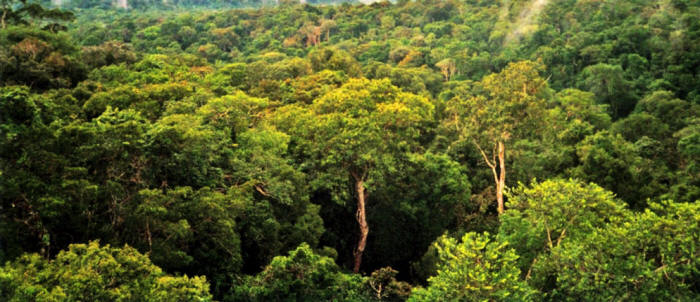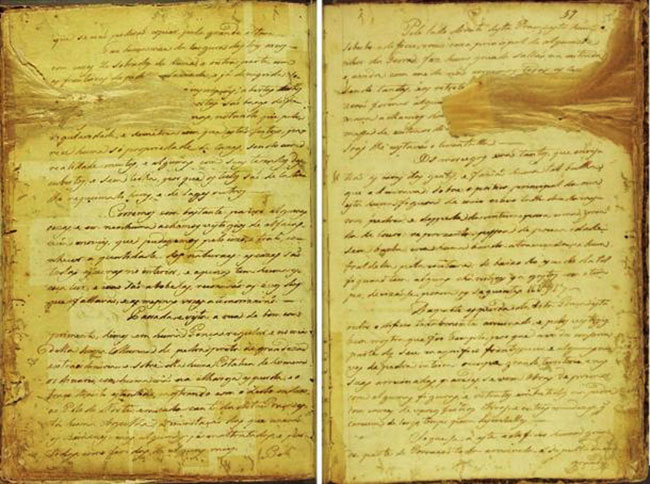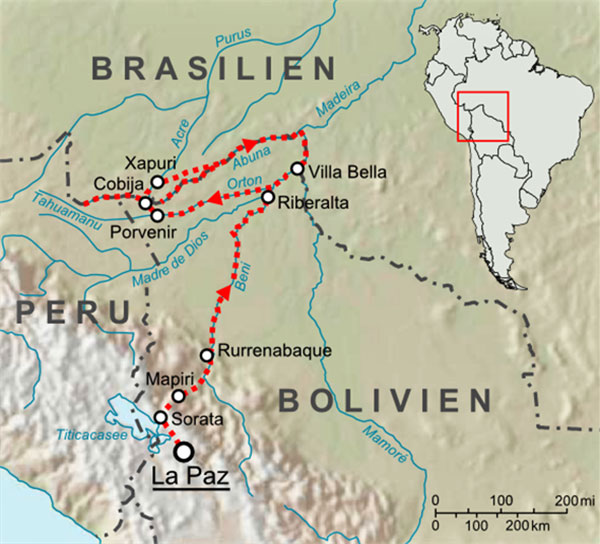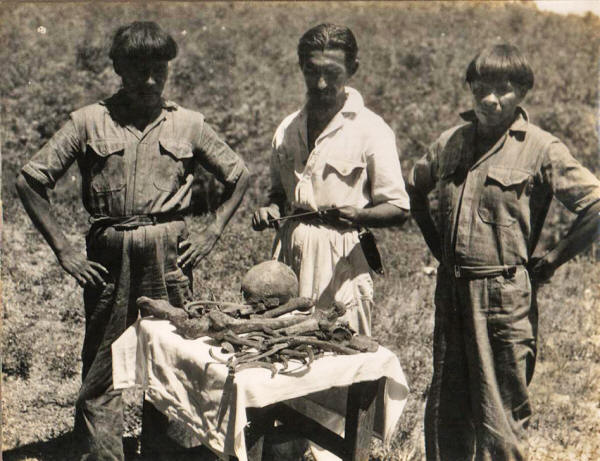|

by Bryan Hilliard
March 14, 2019
from
Ancient-Origins Website
Italian
version

Illustration of El Dorado,
licensed for reuse.
Source: TheRavens
The Lost 'City of Z' is the name British surveyor Percy Fawcett gave
to a secret city buried in the jungles of Chile that was said to
have streets paved in silver and roofs made of gold.
It's also the
name of a film released in 2016 starring Charlie Hunnam, that is
supposedly based on the real life story of Percy Fawcett, billed by
the promoters as one of 'Britain's Greatest Explorers' - though
there is controversy on whether he deserves that credit.
Presenting
Percy Fawcett and the Lost 'City of Z'
For example, John Hemming, a man with much experience visiting
Amazonian peoples, believes this praise could not be further from
the truth.
He claims in a Spectator article that in reality Fawcett
was,
'a nutter, a racist, and so incompetent that the only expedition
he organized was a five week disaster.'
The film (and book by David Grann upon which it is based) seems to
have taken a more sympathetic view of the man and his adventures,
focusing, as expected, on the venture he became famous for - the
search for the 'City of Z' of the title.
But how did the surveyor
become obsessed with the search that would ultimately be his
downfall?
And can we perhaps tell a story that steers away from
fantasy?
Since Europeans first arrived in the New World, there have been
stories of a legendary jungle city of gold, sometimes referred to as
El Dorado.
Spanish Conquistador, Francisco de Orellana was the
first to venture along the Rio Negro in search of this fabled city.
In 1925, at the age of 58, explorer Percy Fawcett headed into the
jungles of Brazil to find a mysterious lost city he called "Z". He
and his team would vanish without a trace and the story would turn
out be one of the biggest news stories of his day.
Despite countless
rescue missions, Fawcett was never found.
Was he killed by Amazonian
tribesmen?
And is there any factual basis for his Lost
'City of Z'?
Who Was Percy Fawcett?
Colonel Percy Harrison Fawcett was born in England in 1867 and was a
famous British explorer whose legendary adventures captivated the
world.
An officer in the Army and trained surveyor, Fawcett was the
last of the famous territorial explorers; men who ventured into
blank spots on the map with little more than a machete and a compass.
For years he would survive without contact in the wilderness and
befriend tribes who had never before seen a white man.
His exploits
in the Amazon inspired books and Hollywood movies; Indiana Jones is
even purportedly based on Fawcett.

Colonel Percy Harrison Fawcett in 1911.
( Public Domain )
The Amazon wilderness is about the size of the continental United
States and during Fawcett's time, it remained one of the last
unexplored regions on the map.
In 1906, the Royal Geographical
Society, a British organization that sponsors scientific
expeditions, invited Fawcett to survey part of the frontier between
Brazil and Bolivia.
He spent 18 months in the Mato Grosso area and
it was during his various expeditions that Fawcett became obsessed
with the idea of lost civilizations in this area.

The wild wilderness of the Amazon in Brazil,
where Percy Fawcett
conducted numerous expeditions.
(Phil P Harris/ CC BY SA 2.5 )
Fawcett
Describes the 'City of Z'
Fawcett formulated theories of a city he called 'Z' in 1912.
His
conviction was fueled in part by the rediscovery of the lost Inca
city of
Machu Picchu in 1911, hidden away in Peru's Andes Mountains.
During his travels, Fawcett also heard rumors of a secret city
buried in the jungles of Chile that was said to have streets paved
in silver and roofs made of gold.
Of 'Z' itself, Fawcett had a
specific idea of what the city looked like.
In a letter to his son
Brian, Fawcett wrote:
"I expect the ruins to be monolithic in character, more ancient than
the oldest Egyptian discoveries.
Judging by inscriptions found in
many parts of Brazil, the inhabitants used an alphabetical writing
allied to many ancient European and Asian scripts.
There are rumors,
too, of a strange source of light in the buildings, a phenomenon
that filled with terror the Indians who claimed to have seen it.
The central place I call
"Z" - our main objective - is in a valley
surmounted by lofty mountains.
The valley is about ten miles wide,
and the city is on an eminence in the middle of it, approached by a
barreled roadway of stone. The houses are low and windowless, and
there is a pyramidal temple.
The inhabitants of the place are fairly
numerous, they keep domestic animals, and they have well-developed
mines in the surrounding hills. Not far away is a second town, but
the people living in it are of an inferior order to those of "Z."
Farther to the south
is another large city, half buried and completely destroyed."
Manuscript 512
In 1920, Fawcett came across a document in the National Library of
Rio De Janeiro called Manuscript 512.
It was written by a Portuguese
explorer in 1753, who claimed to have found a walled city deep in
the Mato Grosso region of the Amazon rainforest reminiscent of
ancient Greece.
Here are some translated excerpts from the worm-eaten,
tattered document:
"After some long and tiresome wanderings, incited by greed for gold,
and nearly lost for many years in this vast wilderness, we
discovered a ridge of mountains so high, that seemed to scrape the
ethereal region and to serve as the throne of the winds beneath the
stars; from afar their luminance was awe-inspiring, especially when
the sunlight gave them the impression of fire to the crystals
forming their rocks.
So beautiful was this that nobody could take
their eyes from the reflections:
the rain came before we approached
to record this wonder in crystal.
We saw above…
We saw from the bare
rocks waters rush down from great height, foaming white, looking
like snow, and seemingly struck aflame from lightning-like bolts of
sunlight.
Delighted by the beautiful view... shone and sparkled... of the waters and tranquility... of the day and the weather, we
decided to investigate this admirable prodigy of nature […]
We pushed on through the street and came to a well-proportioned
square, and in the middle was a black stone column of extraordinary
greatness, and atop it the statue of an ordinary man [i.e.: not a
god] with one hand on his left hip, and the right arm extended,
pointing the index finger to the North Pole.
In each corner of the
square stood an obelisk like those of the Romans, though they are
much damaged, as if by lightning […]
One of our fellows named
João Antonio found in the ruins of a house
a piece of gold money, of spherical form, greater than our coin of
six thousand four hundred reis:
On one side was
the picture or figure of a young man on his knees, and on
the other a bow, crown and arrow, many of such coins we
doubted not to find in the abandoned city, which had been
overthrown by some earthquake which gave no time, so quick
was its arrival, to remove precious objects.
But one needs very
strong arms to loosen the debris that piled up over so many
years, as we saw."

Pages from Manuscript 512.
( Public Domain )
The manuscript also tells of a lost, silver laden city with multi-storied
buildings, soaring stone arches, wide streets leading down towards
a lake on which the explorer had seen two white Indians in a canoe.
On the sides of a building were carved letters that seemed to
resemble Greek or another early European alphabet.
These claims were
dismissed by archaeologists, who believed the jungles could not hold
such large cities, but for Fawcett, it all came together.
In 1921, Fawcett set out on his first expedition to find 'Z'.
Not long
after departing, he and his team became demoralized by the hardships
of the jungle, dangerous animals, and rampant diseases. The
expedition was derailed, but Fawcett would depart in search of his
fabled city later again that same year, this time from Bahia, Brazil,
on a solo journey.
He traveled this way for three months before
returning in failure once again.
The Disappearance of Percy Fawcett and Rescue Missions
Percy's final search for 'Z' culminated in his complete disappearance.
In April 1925, he attempted one last time to find 'Z', this time
better equipped and better financed by newspapers and societies
including the Royal Geographic Society and
the Rockefellers.
Joining
him on the expedition was his good friend Raleigh Rimell, his eldest
son 22-year-old Jack, and two Brazilian laborers.
On May 29, 1925, Fawcett and company reached the edge of unexplored
territory, staring into jungles that no foreigner had ever seen.
He
explained in a letter home they were crossing the Upper Xingu, a
southeastern tributary of the Amazon River and had sent one of their
Brazilian travel companions back, wishing to continue the journey
alone.
The team got as far as a place called Dead Horse Camp, where
Fawcett sent back dispatches for five months, but after the fifth
month they stopped.
In his final dispatch, Fawcett sent a message to
his wife Nina and proclaimed,
"We hope to get through this region in
a few days... You need have no fear of any failure."
It was to be
the last anyone would ever hear from them again.
One of the interesting and unexplained discrepancies that arise from
this letter is related to the coordinates he provides.
He told his
wife the camp was,
"Dead Horse Camp, latitude 11 degrees 43' South
and longitude 54 degrees 35' West [11°43′S 54°35′W], the spot where
my horse died in 1920",
...but he provided his location as 13°43′S
54°35′W in a report to the North American Newspaper Alliance.
Some
wonder if this change was meant to avoid detection by any rescue
missions (Fawcett claimed they should be avoided if he disappeared
since the danger would be high), if Fawcett had found the city and
wanted to keep others from finding it too, or if he simply made a
typographical error.
The expedition had previously stated that they had planned to be
gone for around a year, so when two years passed without any word,
people began to worry.
Numerous rescue missions seeking answers were
mounted, despite his proclaimed wishes against this, and many of
them suffered the same fate as Fawcett.
For example, a journalist
named Albert de Winton went out in search of his team and was never
seen again.
In total, 13 expeditions would be launched in an effort
to find answers to Fawcett's fate, and over 100 people would lose
their lives or join the explorer to vanish into the jungle.
Thousands of people applied to go on these expeditions and dozens
set out looking for them over the next several decades.

One of the routes taken by Percy Fawcett.
(Lencer/ CC BY SA 3.0 )
What Really Happened to Percy Fawcett?
The official report from one of the rescue missions said that
Fawcett had gone up the
Kuluene River and was killed for insulting
an Indian chief - which is the story most believe today.
However,
Fawcett had always talked about maintaining positive relationships
with the indigenous people of the area and the way the natives
remember him correlates with what Fawcett has written down.
Another possibility is that he and his team died as a result of an
accident such as disease or drowning. A third possibility is that
they were caught off guard and robbed and killed.
There had been a
revolution in the area not long before and renegade soldiers had
been hiding out in the jungle.
On a number of occasions, within
months of this expedition, travelers had been stopped, robbed, and
in some cases murdered by the rebels.
In 1952, the Kalapalo Indians of Central Brazil reported that some
explorers had passed through their region and were killed for
speaking badly to the children of the village.
The details of their
account suggested that the victims were Percy Fawcett, Jack Fawcett,
and Raleigh Rimmell.
Following the report, Brazilian explorer
Orlando Villas Boas investigated the supposed area where they were
killed and retrieved human bones, as well as personal objects
including a knife, buttons, and small metal objects.

Orlando Villas Boas
with two Kalapalo Indians with
the supposed
bones of Colonel Fawcett. 1952
( CC BY SA 3.0 )
The bones underwent numerous tests.
However, without the DNA of
members of Fawcett's family, who refused to provide samples, no
confirmation could be made regarding the identity of the remains.
The bones currently reside in the Forensic Medicine Institute of the
University of Sao Paulo.
In 2005, David Grann reported in The New Yorker that he had visited
the Kalapalo tribe and was told that the tribe had preserved
Fawcett's story over time.
Their people had allegedly warned Fawcett
and his companions that they were in dangerous territory and may be
killed by tribes living nearby.
After five days they no longer saw
the evening campfire where Fawcett was staying and they searched for
the campsite, when they couldn't find it they presumed their fierce
neighbors had killed the Englishmen.
Has the Lost
'City of Z' Finally Been Found?
While Fawcett's lost 'City of Z' has never been found, numerous
ancient cities and remains of religious sites have been uncovered in
recent years in the jungles of Guatemala, Brazil, Bolivia, and
Honduras.
In 2007, an archaeologist named Michael Heckenberger wrote about the
discovery of a monumental ancient site known as Kuhikugu.
It is
allegedly found near where Fawcett's team was searching for the lost
'City of Z'. Though there are questions, it is uncertain if it is the
legendary site.
But with the advent of new scanning technology, it
is possible that an ancient city that spurred the legends of 'Z' may
one day be identified.
Video
References
|







